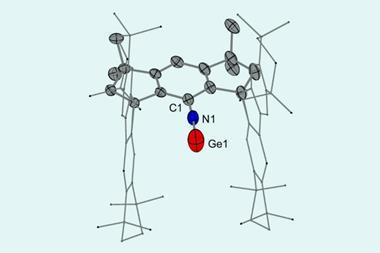Scientists take full advantage of asteroid flying uncommonly close to the Earth to gather information on its structure
Space scientists have started sifting through masses of data gathered from a bank of telescopes that were trained upon an asteroid that flew fleetingly past the Earth on 8 November, coming as close as any extraterrestrial body of comparable size on record.
Asteroid 2005 YU55 passed within 325,000 km of the Earth, closer than the Moon, giving scientists an unprecedented opportunity to study the 400m wide lump of rock, which was travelling at more than 46,000 km per hour.
Across the world banks of telescopes were trained on the asteroid, gathering information about its morphology, structure and dynamics.

Nicholas Moskovitz, of the Carnegie Institution of Washington, US, was one of the researchers monitoring the asteroid. ’The team we have assembled is focused on measuring reflectance spectra of YU55 during the two days following its closest approach,’ he says. The team is now analysing data from five different telescopes in Arizona, California and Hawaii, operating instruments at visible, near-infrared and mid-infrared wavelengths.
’Based on optical imaging and NIR spectra from the 2010 apparition we know this object to be a C-type asteroid, which is probably analogous to carbonaceous chondrite meteorites,’ says Moskovitz. ’These are relatively common meteorites that contain silicates, organics and can be water rich. However, the existing data is not sufficient to make any detailed statements about composition.’
Visible spectra could provide information indicative of hydrate minerals, says Moskovitz. ’The same will be true with the near-infrared spectra, where we will be looking for a water absorption feature.’ Such observations are only possible because of the proximity of the asteroid, which imparts it with unusual brightness.
Early indications suggest that the data coming from the telescopes was ’very good,’ Moskovitz says. ’All in all I am pleased with how things have gone. We did have bad weather at the beginning of the night in Hawaii, which prevented the telescopes from opening, but it completely cleared and we had all five telescopes pointing at the target.’
It will take a number of weeks to process and interpret the data which will, says Moskovitz, provide insights into the building blocks of the planets and on ’biologically important elements - organics, water - which may have been delivered to the Earth by objects like YU55’.
Alan Fitzsimmons, an astrophysicist at Queen’s University Belfast in the UK, says: ’This is a nice example of what you can do when mother nature throws a rock at you at close quarters and you put a lot of effort into studying it.’
Simon Hadlington







No comments yet